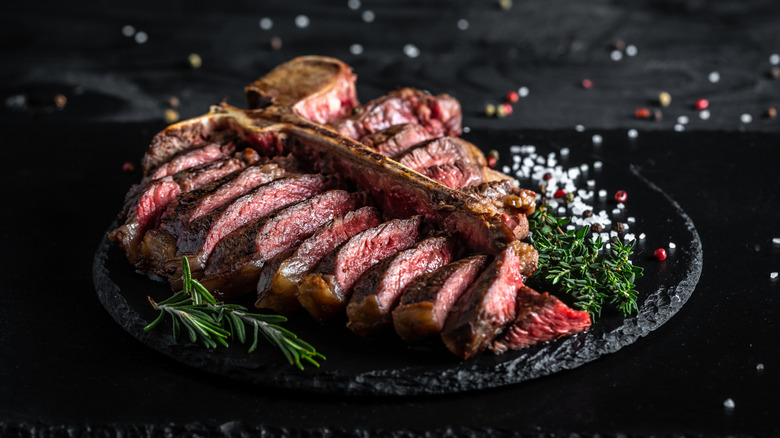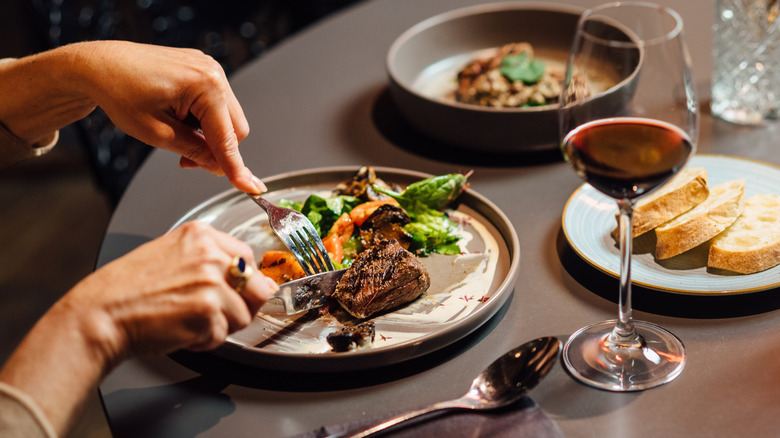The Cuts Of Meat That Are Made For Sharing At A Steakhouse
If you've ever gone to one, you know that steakhouse dining is expensive. But have you ever seen a cut on the menu and thought, "Why is this so expensive? Who is eating all of this?" Well, Ed Cotton, Chef and Co-owner of Jack & Charlie's No. 118 and Leonetta in New York City, tells us that these cuts are actually made for sharing!
T-bones are already one of the best cuts of steak money can buy since it consists of both New York strip and filet mignon, but Cotton tells us that porterhouses take it to the next level with an exceptionally thick tenderloin side. Many steakhouses serve these dinosaur slabs of meat between 28 and 48 ounces, so you may even require three people to polish one off in a single sitting. If you lean more towards tenderloin, Cotton recommends a chateaubriand, the center-cut portion of the whole cut, which many steakhouses serve sliced for two people, perfect for a date night out.
If you lean more towards bone-in and marbled, Cotton advises you consider a ribeye. While sizes vary quite a bit, cuts made for sharing at a steakhouse reach up to 32 ounces. When it comes to flavor, bone-in and tomahawk varieties come from the same cut of beef, with the extra bone on a tomahawk kept solely for more dramatic presentation.
Best practices when sharing a steak at a steakhouse
One caveat to sharing steaks is that your whole party must agree on a temperature. While modern chefs advance cooking technology every day, we're not quite at the point where chefs can prepare a 48-ounce Porterhouse half medium-rare and half well-done. Before ordering a shareable steak, be sure to ask how the house prepares and serves it to inform your decision.
If you're going to share steak with more than one person, it's proper form to tell your server ahead of time. Many establishments don't mind if you share a single steak, even if it's only meant for one person, though they may charge you a small plate sharing fee. Communicating with your server also lets them do the work for you! Rather than trying to carve your meat yourself, communicating your intentions to your server ahead of time allows them to set the table appropriately, giving each person relevant dinnerware such as your own plates, steak knives, dipping sauces, etc. Ed Cotton tells us this especially important for steaks that are "French served," meals finished, carved, and served tableside rather than portioned out and plated in the kitchen.
A top-tier steakhouse earned its credentials through extreme attention to detail, but you won't be able to reap the rewards of its waitstaff's experience and knowledge unless your properly communicate with them. Telling them you intend to share allows them to tailor drink, side dish, and dessert recommendations based on your individual tastes, giving you the best possible dining experience.


